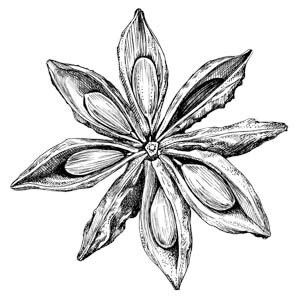Here’s a simple, staple recipe that you’ll want to hang on to: Devonshire Cream. I love serving this creamy goodness on top of a fresh homemade scone with my favourite jam.
I remember the first time my mom made it for us… It was like magic. Fluffy, creamy goodness on top of an already-great treat. Being one of 10 sisters (and 2 brothers!), tea parties were a pretty normal part of life for us, and this recipe is one of the ways that we took tea time to the next level for special occasions, movie nights, guests, or just the odd day when we needed to make something special (just because).

What is Devonshire Cream?
To my knowledge, Devonshire Cream is the same (in its original form) as the famous British “clotted cream” which is served on scones and other baked dainties for tea time. If you want to see how this recipe varies from a traditional Devonshire cream, read on! I’ll get into that a bit later on.

What is clotted cream?
Clotted cream is often very close to butter. It can have a very fatty texture and yellowish colour, meant to be a buttery whipping cream complement to the jam on an English scone.
Where the original Devonshire Cream got its name
I recently learned that the difference between Devonshire Cream and clotted cream was simply that in Devonshire, the cream would be spread on the baking first (like butter), and then the jam on top. In other parts of England, however, the cream would be spread over top of the jam. (It’s like the Butter Battle Book is real life!) How true this is, I’m not sure – but it’s interesting, to say the least!
If this was still the official definition, I’d have to confess that I’ve been using Devonshire cream backwards my whole life and calling it by the wrong name! This recipe is much lighter than a traditional clotted cream (it is much more similar to whipped cream). That said, I’m going to have to continue dolloping a cloud of this stuff onto the tops of my jam-spread scones… And calling it like I always have, Devonshire cream.

How does this recipe vary from clotted cream?
As I’ve already mentioned, this particular variation of clotted cream is much lighter. I’ve tried several different recipe variations for Devonshire cream over the years, and somehow this one remains my favourite. It is just barely sweet, soft as a cloud, and slightly tangy from the small addition of sour cream folded into it.
What to serve with Devonshire Cream
As I mentioned before, this recipe makes the perfect crowning touch to a fresh homemade scone spread with your favourite preserves. Here are some of my favourite recipes:
Scones:
- Light and Flaky Scones
- Blueberry Lavender Scones
- Miniature Blueberry Drop Scones
- Currant Scones
- Lemon Oat Scones
Preserves:
Recipe substitutes
Since there isn’t much to this recipe, there isn’t a whole lot you can change. However, I have used thick Greek yogurt in place of the sour cream before with great results! You can also adjust the sweetness of the cream to be more or less, depending on your preference.

You will need:
- Ingredients (see recipe card)
- Measuring cups and spoons
- Electric mixer (or stand mixer)
- Mixing bowl
- Spatula


Devonshire Cream
This recipe is just slightly sweet and a bit tangy. Delicious served on scones with your favourite preserves.
Ingredients
- 1 cup heavy whipping cream (35% cream)
- 1/4 cup icing sugar
- 1/4 cup sour cream
- 1 tsp vanilla extract
Instructions
-
In a large mixing bowl, beat the cream and sugar until stiff peaks form. Fold in vanilla and sour cream. Serve immediately, or chill for up to 2 hours before serving.
Recipe Notes
Tip: Try adding a little bit of lemon or orange zest in with the vanilla!


Nothing makes a tea party better like all of the little fixings… and this one is one of the best!
Have you made Devonshire Cream before? If so, what type of recipe did you use? I’d love to hear about it. Or better yet, do you know more about the history or traditional origin of Devonshire Cream? I’d love to learn more – feel free to share your wisdom in the comments!
Did you make this recipe? As always, I’d love to hear (and see!) how it turned out! You can tag your photos @naomicakesofficial on Instagram if you want to show off your beautiful work.
Thanks for reading,
–Naomi
This post contains affiliate links.

